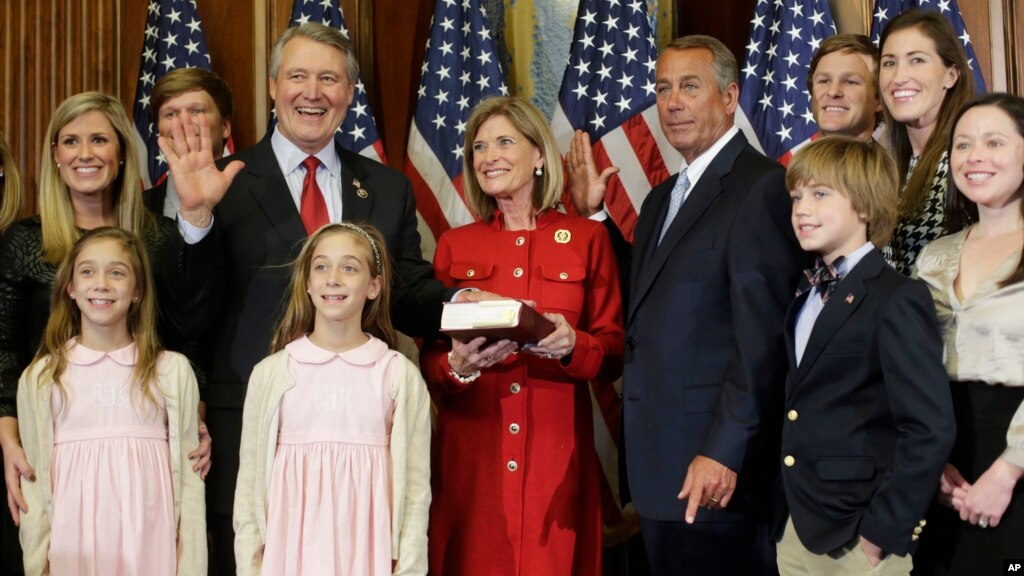
Barack Obama has won the last two presidential elections. Many Democrats believe Hillary Clinton can win if she campaigns in 2016. Even if she does win, the presidency would be one of the few offices Democrats would hold. Republicans now control a large majority of America’s state and national offices -- including most of the governor’s offices, state legislatures and the US Congress.
This has happened for many reasons. One of them is white voters. Many have been leaving the Democratic Party, especially in the “Deep South.” Another is Republicans have outspent and outworked Democrats at the local and state levels.
White voters leaving the Democratic Party
The Deep South is an area that includes Alabama, Georgia, Louisiana, Mississippi, North Carolina and South Carolina. It also includes parts of five other states. They are Florida, Virginia, Tennessee, Arkansas and Texas. In 1964, Democrats held or controlled almost all of the political offices in the Deep South. That was the same year that President Lyndon Johnson signed the Civil Rights Act into law. The measure gave legal protection to minorities.
Experts believe the Civil Rights Act was the main reason for whites leaving the Democratic Party, giving control of the South to the Republicans.
In the 2014 election, Democratic Representative John Barrow of Georgia lost to Republican Rick Allen. Mr. Barrow served in Congress for 10 years. He was the last white Democrat serving in the House from the Deep South.
Late last year, Louisiana Senator Mary Landrieu lost in her effort to get re-elected. Republican Bill Cassidy won her Senate seat. His victory removed the only Democrat to hold statewide office in Louisiana and the last Democratic senator to represent the Deep South.
With the victories, Republicans now hold 54 of the 100-seat Senate chamber and 247 of the 435 U.S. House seats. The New York Times newspaper reported that, in the Deep South, Republicans control not only every U.S. Senate seat, but also every governor’s mansion and almost every state legislative body.
The results are not better for Democrats in other parts of the country. There are Republican governors in 31 of the 50 states, including seven of the 10 largest states. Only California, Pennsylvania and New York have Democratic governors among the 10 largest states.
Even in states where most voters are Democrats, Republicans are having success. In November, voters in three Democrat-majority states chose Republican governors. The three are Illinois, Maryland and Massachusetts.
The website Real Clear Politics reports that Republicans hold the governorship and both houses of the state legislature in 24 states. Democrats have that same level of control in only seven states. Republicans also control 68 of 98 house and senate chambers at the state level. In the elections last November, Republicans gained control of 11 state legislatures that had been held by Democrats.
Republicans focus on state and local's elections
Raffi Williams is a spokesman for the Republican National Committee. He says the party worked hard to find candidates and identify issues. Republicans, he says:
“Put the focus on finding and grooming great talent and promoting them at the state level. And talking about the issues that matter to people at state and, and local levels, you know, such as lower taxes and these are things that have connected with people.”
Guy Molyneux does public opinion surveys for Democratic activist groups. He admits Republicans have outworked Democrats at the state level.
“I don’t think Democrats have in any sense ignored, you know, the gubernatorial elections or state legislative elections. But I think it’s probably a fair summary to say that the constituencies on the Democratic side have not focused as much or as well on those state races.”
Republican control of state-level offices has also given them control of “re-districting.” State and national electoral districts are created in the states. Control of this process permits Republicans to create districts whose voters are more likely to vote for Republican state legislators as well as members of the U.S. House.
For example, the new Pennsylvania 7th Congressional District includes parts of five different counties. The Republican-controlled legislature created the district with the help of a Republican governor. The shape of the district has been described as “an oil spill…road kill…or a crab.” Critics say the district and others were drawn to protect Republican officeholders.
The news is not all bad for Democrats. Democrats get large majorities of the votes of African-Americans and Hispanics. As the percentage of minority population grows larger than whites, Democrats hope to regain control of the country’s politics. However, Guy Molyneux says Democrats know it will be very difficult to succeed without the support of white voters.
“Democrats have by no means written off the white vote. And there are reasons that we have, have to be optimistic about improving our percentages there, but, but certainly in these off-year elections and in these state legislative races we, we definitely need to do better.”
On the Republican side, Raffi Williams says the party has to reach out to minorities, something he says it has not done well in the past.
“For a while there we weren’t engaging in minority communities as much as we should have been. (But) recently we have been going to African-American, Hispanic, Asian (and) youth communities.”
I’m Christopher Cruise.
Christopher Cruise reported and wrote this story for VOA Learning English. Hai Do was the editor.


